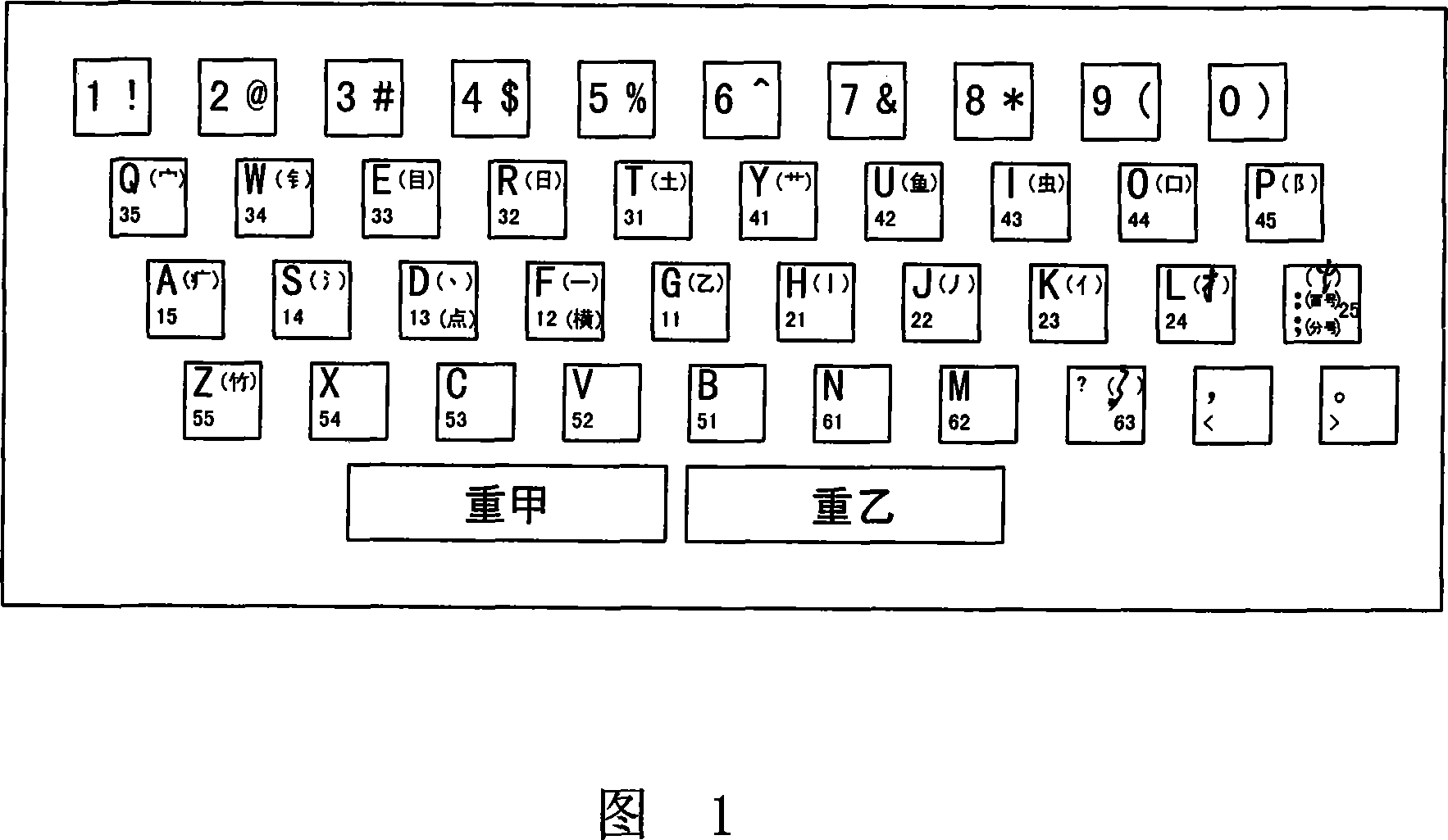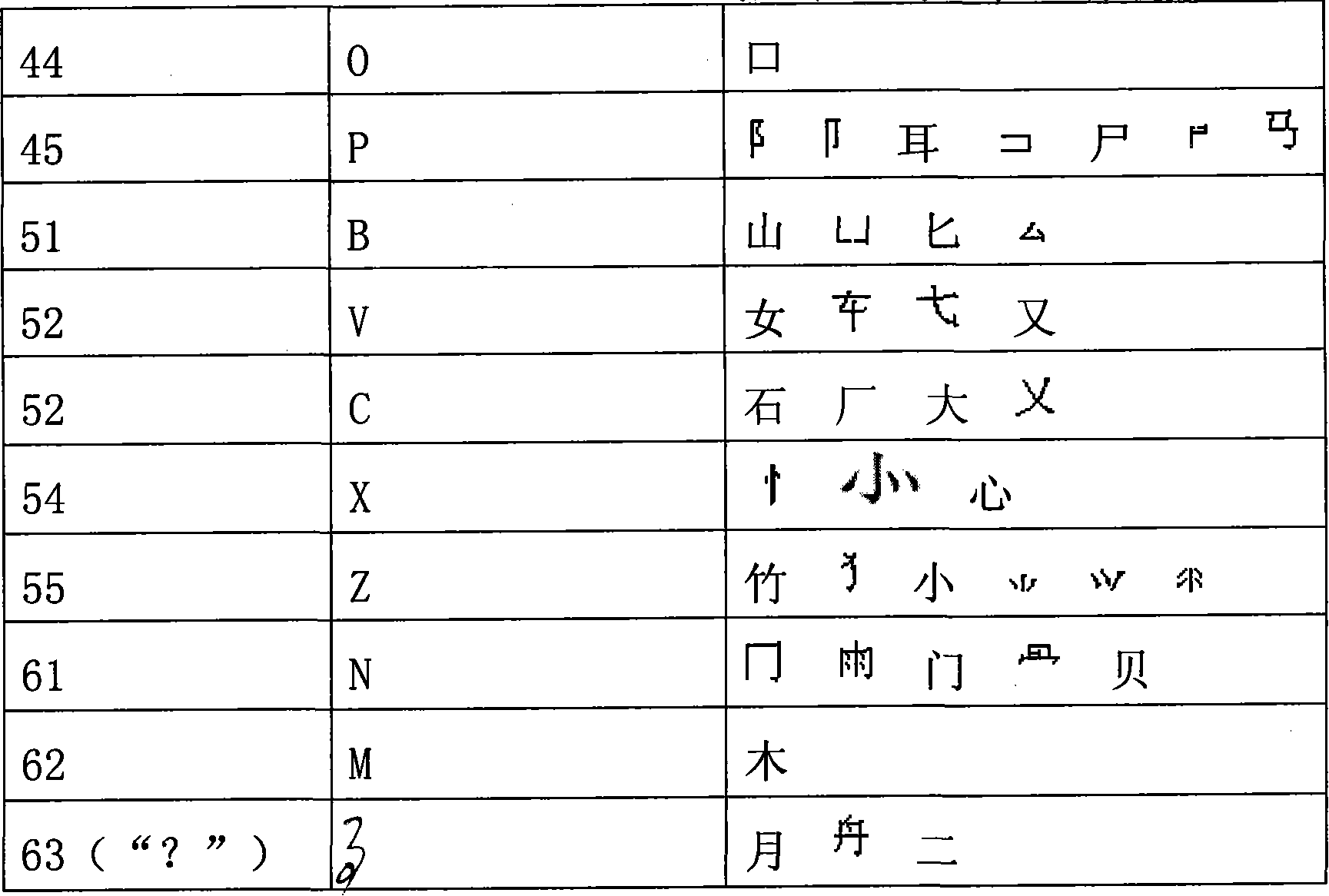Initial and final code Chinese characters input method
A technology for inputting, beginning and ending of Chinese characters, applied in the input/output process of data processing, electrical digital data processing, instruments, etc., can solve the problems of low repetition rate, difficult to grasp and difficult to grasp the symbol representing radicals, etc.
- Summary
- Abstract
- Description
- Claims
- Application Information
AI Technical Summary
Problems solved by technology
Method used
Image
Examples
Embodiment Construction
[0035] The present invention will be described in further detail below in conjunction with the embodiments.
[0036] According to the aforementioned radical selection rule, this embodiment selects 113 radicals; according to the aforementioned radical key placement rules, 26 letter keys and 2 punctuation symbols ":" key and "?" key (respectively Named as "Fire" key (where the key is marked with the word "Fire" in cursive font) and "Month" key (where the key is marked with the word "Month" in cursive font). When inputting ":" (colon), click the space bar after it , when inputting ";" (semicolon), click the repeated code key in the back; when inputting "?", click the space bar in the back, and when inputting " / ", click the repeated code key in the back. This embodiment Also be applicable to the Chinese character input of numeric keyboard, at this moment, described radical is arranged on numeric key.The distribution of the key name root of the present embodiment on keyboard is ref...
PUM
 Login to View More
Login to View More Abstract
Description
Claims
Application Information
 Login to View More
Login to View More - R&D
- Intellectual Property
- Life Sciences
- Materials
- Tech Scout
- Unparalleled Data Quality
- Higher Quality Content
- 60% Fewer Hallucinations
Browse by: Latest US Patents, China's latest patents, Technical Efficacy Thesaurus, Application Domain, Technology Topic, Popular Technical Reports.
© 2025 PatSnap. All rights reserved.Legal|Privacy policy|Modern Slavery Act Transparency Statement|Sitemap|About US| Contact US: help@patsnap.com



